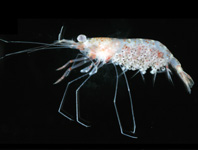Abstract
The phylogenetic position of the critically endangered Saint Croix ground lizard Ameiva polops is presently unknown and several hypotheses have been proposed. We investigated the phylogenetic position of this species using molecular phylogenetic methods. We obtained sequences of DNA fragments of the mitochondrial ribosomal genes 12S rDNA and 16S rDNA for this species. We aligned these sequences with published sequences of other Ameiva species, which include most of the Ameiva species from the West Indies, three Ameiva species from Central America and South America, and one from the teiid lizard Tupinambis teguixin, which was used as outgroup. We conducted Maximum Likelihood and Bayesian phylogenetic analyses. The phylogenetic reconstructions among the different methods were very similar, supporting the monophyly of West Indian Ameiva and showing within this lineage, a basal polytomy of four clades that are separated geographically. Ameiva polops grouped in a cluster that included the other two Ameiva species found in the Puerto Rican Bank: A. wetmorei and A. exsul. A sister relationship between A. polops and A. wetmorei is suggested by our analyses. We compare our results with a previous study on molecular systematics of West Indian Ameiva.

